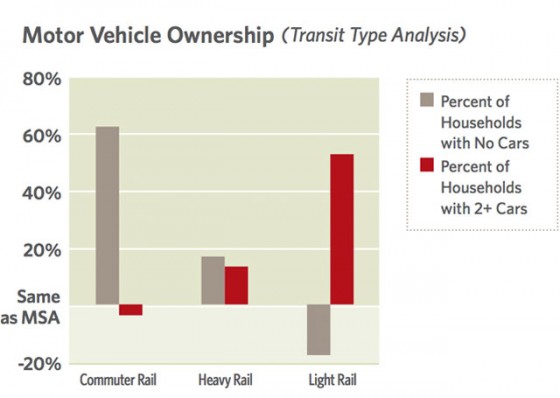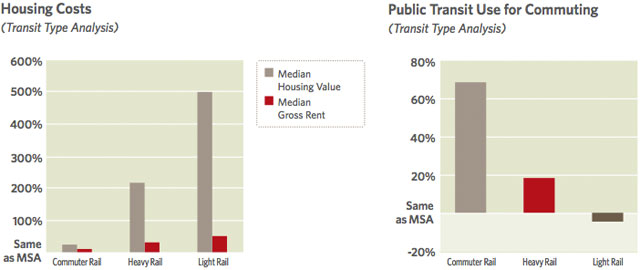How transit-oriented development can be triple bottom line

First of all, this post is not against light-rail transit-oriented development, but that it needs a better model if it’s to achieve its noble intended goals of increasing transit use while decreasing auto dependence.
As you can see by the graph above, in light-rail transit-oriented development (TOD), there are a whopping 50% more households with two or more cars than the area average, and 20% less households with no cars than the area average. In other words, the current model of TODs targeting higher income home buyers is not triple-bottom-line nor sustainable.
All graphs on this page come from Maintaining Diversity in America’s Transit-Rich Neighborhoods (page 31), published by the Dukakis Center for Urban and Regional Policy.
The answer is simple and clear, transit-oriented development housing is too expensive, as you can see in the graph below. If the goal of a transit-oriented development is to increase transit use, it shouldn’t target its housing to those with higher incomes, since, not surprisingly, those with higher incomes tend to drive more and use transit less.
Proposed past solutions? The Dukakis report states a number of policies relying largely on government support, but we all know that funding assistance is severely limited in the grand scheme of things. Their proposed policy of unbundling parking, however, is significant. Read on…
A more universal solution? It’s about redefining what the American Dream is and identifying yourself with leading that charge, as you can see by those in the green shaded area in the graphs of this previous post. I promise you, if you take the time to understand what that graph means, you will understand the change that needs to, and will happen. This means two primary things:
1. Not-so-big housing is not-so-bad. In fact, there’s a national movement to live in smaller, smarter homes – find examples here.
2. Unbundle parking. In other words, sell it separately from the home. The report outlines this in detail on page 53. It can save a triple bottom liner between $20,000 to $40,000 a year, not to mention a lot of other things in the other two bottom lines (ie jobs, nature, quality of life).


Leave a Reply